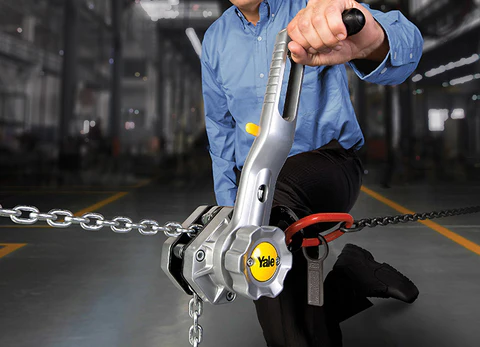The Best Guide to Choosing the Right Lifting Equipment for Your Needs
When it comes to moving heavy loads safely and efficiently, the right lifting equipment is essential. Whether you're working in construction, manufacturing, logistics, or any other industry that involves heavy lifting, choosing the correct tools can make a huge difference in both safety and productivity. This guide will walk you through the different types of lifting equipment available and offer practical tips on how to select the best option for your specific needs.

### Understanding Different Types of Lifting Equipment
Lifting equipment includes a wide range of tools and machines designed to lift, move, and position heavy objects. Here are some of the most commonly used types:
- **Cranes**: These powerful machines are ideal for lifting extremely heavy weights. They come in various forms, such as tower cranes, mobile cranes, and overhead cranes, each suited for different applications like construction sites or industrial facilities.
- **Hoists**: Hoists are used to lift and lower loads using a drum or wheel that wraps around a rope or chain. They can be manual, electric, or air-powered and are often used in warehouses, factories, and maintenance areas.
- **Forklifts**: These are essential for moving materials over short distances. Available in electric, diesel, and gas models, forklifts are widely used in distribution centers, manufacturing plants, and storage facilities.
- **Winches**: Winches are mechanical devices used to pull or lift heavy objects by winding a cable or rope. They are commonly found in marine, automotive, and construction settings.
- **Jacks**: Portable lifting devices used to raise heavy objects. Hydraulic jacks, bottle jacks, and floor jacks are popular choices in both industrial and automotive environments.

### Key Factors to Consider When Choosing Lifting Equipment
Selecting the right lifting equipment requires careful evaluation of several factors to ensure it meets your operational needs and keeps your team safe. Here are the main considerations:
- **Load Capacity**: Always determine the maximum weight the equipment must handle. Choose a model with a slightly higher capacity than needed to account for unexpected variations.
- **Lift Height**: Consider the vertical distance the load needs to be lifted. Some equipment may not be suitable for very high lifts, so choose accordingly.
- **Environment**: The working environment matters. For example, electric hoists are better for indoor use, while diesel-powered forklifts are more suitable for outdoor operations.
- **Usage Frequency**: If the equipment will be used frequently, invest in durable and high-quality models that can withstand daily wear and tear.
- **Mobility Needs**: Decide whether the equipment needs to be portable or stationary. Mobile options like forklifts offer flexibility, while stationary equipment like overhead cranes provide stability.
- **Safety Features**: Ensure the equipment includes essential safety mechanisms such as overload protection, emergency stop buttons, and proper guarding to prevent accidents.
### Maintenance and Compliance
Regular maintenance is crucial for the safe and efficient operation of lifting equipment. Follow the manufacturer’s guidelines for inspections, servicing, and part replacements. Additionally, ensure your equipment complies with local safety regulations, such as LOLER (Lifting Operations and Lifting Equipment Regulations) in the UK. Staying compliant not only protects your workers but also helps avoid legal issues and costly fines.
### Conclusion
Choosing the right lifting equipment is more than just a technical decision—it's a critical factor in ensuring the safety, efficiency, and success of your operations. By understanding the different types of equipment and considering key factors like load capacity, environment, and safety features, you can make an informed choice that suits your needs. Don’t forget to prioritize regular maintenance and compliance to keep everything running smoothly.
For expert advice on selecting the best lifting solutions for your business, visit Lifting365. We’re here to help you achieve safer and more efficient lifting every day.
A mechanical seal is a crucial device used in various industrial applications to prevent the leakage of fluids or gases between two mating surfaces. It consists of several components that work together to provide a reliable seal.
Hi Fab Mechanical Seal,Balanced Mechanical Seal,Mechanical Seal Image,Precision Work
Zigong Yibaijie , https://www.oz-yibaijie.com